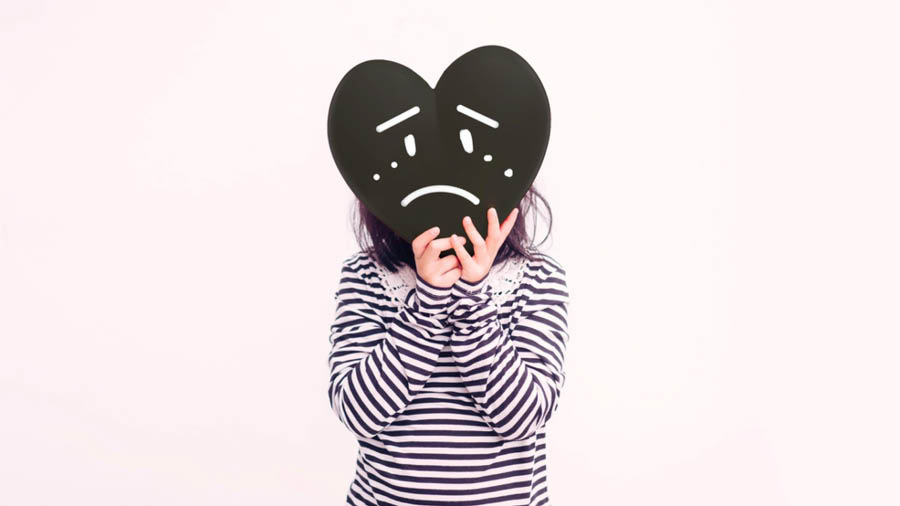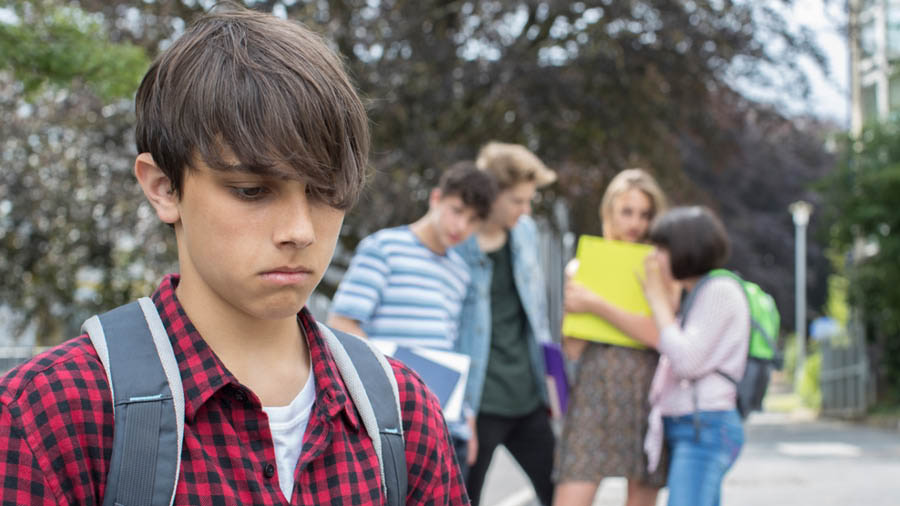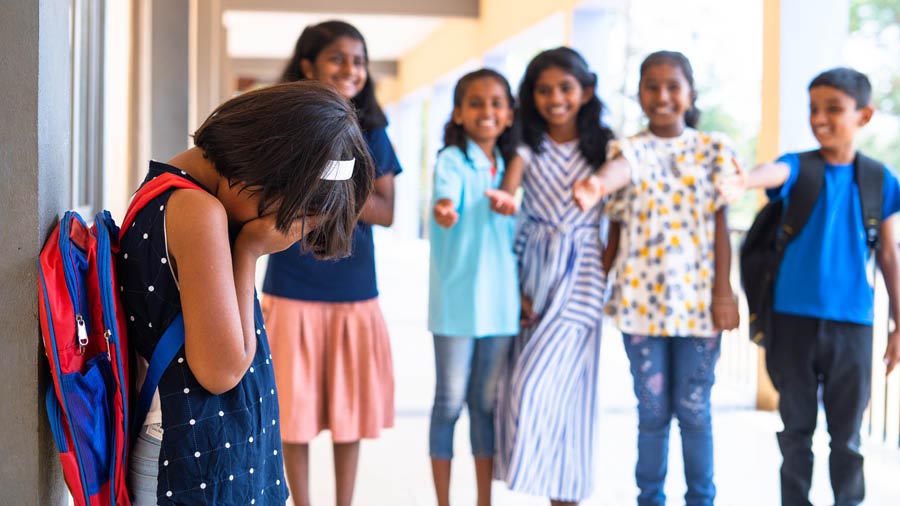A child, still in primary school, beats up kids weaker than him. He wants to show off that he is stronger than his classmates.
Another child sees herself as the leader. The rest had better do what she says.
A third never tires of teasing and humiliating a classmate because that kid is in some way different from the rest.
And, thus is born a future bully.
Recent events have drawn attention to the impact of bullying. Often enough, the roots of this act start to take shape during one’s formative years. My Kolkata spoke to two mental health professionals to understand how bullying begins in childhood, and the things one can do to mitigate its effects. In the following article, the first of a three-part series, Dr. Sritama Ghosh and Dr. Jai Ranjan Ram share their views about such aggressive behaviour among children and how both the bully and the bullied need help.
A word of caution for readers: the article describes bullying in detail and can be triggering to some.

Dr. Sritama Ghosh and (right) Dr. Jai Ranjan Ram
The first strains of bullying emerge early, sometimes as early as the age of four, says Dr. Sritama Ghosh, consultant psychologist, health wellness counsellor and psychology teacher at Indus Valley World School, Kolkata. But it usually takes a few more years for the habit of bullying to actually grow on them.
“Usually, it’s easy to mould children and rectify behaviour before this age (of four). Young children prefer helping each other because they are rewarded for it. But there is a drastic change by the time they enter grade four, and the same children can turn into bullies,” Ghosh says.
According to Ghosh, the main reason behind children resorting to bullying stems from their environment at home. Consultant psychiatrist Dr. Jai Ranjan Ram agrees, adding that when children notice role models at home bullying other people, they have a tendency to learn this behaviour. “The father might be bullying the mother or the domestic help. Children can pick up on this disrespect towards someone else’s emotional needs,” he says.

The main reason behind children resorting to bullying stems from their environment at home
ShutterstockBut the bullying need not always be administered on a third party for kids to pick up such behaviour. “Parents sometimes put children through verbal and social abuse because of their academic performance. This reinforces them to go to school with this pent-up aggression, and unload it on other children. The same can happen when they are bullied by an elder sibling. The act of bullying always works in a chain,” says Ghosh, adding that in such cases, children perceive the act of bullying as a line of defence, so as to avoid getting bullied themselves.
“Usually, bullying doesn’t start as physical. The child may be verbally negative towards someone. Parents may laugh it off as a joke, but it reinforces the child into believing that being vocal in a negative way will get the approval of adults.”
Problematic viewings
Another potential contributing factor towards normalising bullying, Ghosh says, is what children watch in their spare time, especially problematic cartoons. She requests parents to be more aware of what their children watch, as many of these cartoons glorify the act of throwing vulgar tantrums with humour and treat them as harmless behaviour.
“A lot of cartoons highlight that a child is smart by showing their misbehaviour in a hilarious or heroic light. Bullying is sometimes disguised in these shows as a means to teach someone a lesson. The kids watching it may not recognise the pattern, but bullying is subconsciously reinforced, and they start behaving like this in the classroom, expecting the same adulation,” Ghosh says.

A potential contributing factor towards normalising bullying is what children watch in their spare time, especially problematic cartoons
ShutterstockRam sheds light on one of the core factors that contributes towards the creation of a bully: lack of empathy. “Even at the tender age of eight, children who don’t develop empathy can get a sense of power by humiliating someone else. Some kids see themselves as leaders, and get a kick by asserting their dominance because they don’t realise how hurtful their actions can be to other children.”
The foundation of bullying, the consultant psychiatrist elaborates, stems from social ‘otherisation’, and the core desire is to impress upon someone that because they are different, they are not good enough. “It can be anything from belonging to a different religion, having pimples, not being involved in sports, or not having a father. A bully finds something that makes the child different from the majority, and teases them based on these differences.”
‘I am not good enough’
Both Ram and Ghosh emphasise the correlation between bullying and low self-esteem. A recurring monologue that plays in the mind of every individual who has faced some form of bullying can be summed up in five words — “I am not good enough.” The result, they say, is severe confidence issues.
When a child is bullied in a school environment where they have to go back every day, they might accept that this will continue to happen against their wishes, leading to a condition that psychiatrists describe as “learned helplessness”. In other words, a sense of powerlessness that arises after a person has experienced a stressful situation repeatedly. “This can further develop into depression, and the nervousness of going back to a hostile environment that they can’t escape from can lead to anxiety,” Ghosh says, adding that for younger kids, the inability to express this frustration can even lead to bedwetting.

A recurring monologue that plays in the mind of every individual who has faced some form of bullying can be summed up in five words — ‘I am not good enough’
ShutterstockAccording to Ram, low self-esteem can lead to isolating oneself, self-harm, and even harbouring suicidal thoughts. “Bullying leaves a long-term impact and skews your relationships because you lose trust in your peers and see everyone in a hostile light.”
What about those kids who are bullying others?
Ghosh advises exercising caution to prevent the situation from getting worse. “If the repercussions of bullying are not explained properly to children, they can become more curious about this ‘forbidden activity’ and may feel like repeating it because of a certain thrill.” She encourages spreading awareness by creating a collaborative space where peers and elders work together. “Every class should assign students who take on the role of an ‘anti-bullying squad’ because it is practically impossible for teachers to keep track of what happens among students.”
A bully is also in a vulnerable state
Ghosh urges elders to be mindful of the way they approach these conversations with children by going down to their level rather than simply disseminating information. “Parents need to be involved by giving children the space and the time to share things. Intrusively demanding information about bullying won’t help. They need to create an environment where everyone is talking about their day, making it easier for children to open up by themselves without fear.”

Parents need to be involved by giving children the space and the time to share things
Both Ghosh and Ram say that institutions should take a firm and public stand against bullying, along with instant action. The bully also has to be an active part of the rehabilitation process. “A child who shows aggression has some deep-rooted sadness. The bully is also in a vulnerable state and we need to understand that, rather than punishing them. If we find the root cause of their aggression, we can provide the child with alternative methods of behaving and help them come out of the situation,” Ghosh explains.
Bullies, Ghosh says, must be sat down and explained the consequences of their actions in order to establish empathy. “We must sit with the child and develop a relationship where they can express what they are going through. It’s not about making the child feel like they are a bad person, but that they are exhibiting a behaviour that needs to be changed. Rather than avoiding the conversation, we must make them understand the impact their actions have on other children.”
EXPERT ADVICE
Dr. Sritama Ghosh provides a ready reckoner on bullying among children
What is bullying?
When a child or group of children repeatedly do something on purpose to make someone else feel hurt, sad or embarrassed. Bullying takes the following forms:
- Physical (which can lead to bodily harm)
- Verbal (Use of words to hurt others)
- Social (Difficult to notice; involves spreading lies or rumours to isolate someone)
- Cyber (Bullying someone on the Internet)
What is the impact of bullying?
Bullying can affect children in many ways and at many levels:
- Lead to poor academic performance
- Result in low self-esteem
- Cause sadness or depression
- Can make a child turn violent
- Lead to substance abuse
- Lead to crimes later in life

Bullying can affect children in many ways and at many levels including poor academic performance and low self esteem
What should parents/guardians/teachers do?
The first thing is to make it clear that you are available to talk to the child:
- Sit silently with the child, wait for them to talk rather than fill the silence with questions
- Listen to the child without interrupting, unless you are encouraging them to continue talking
- Don’t react to what the child is saying, concentrate on what the child needs. And do not blame the child
How to help?
Take bullying seriously. Children may be embarrassed to admit it, so you have only one chance to step in and help.
- Teach kids to solve problems without violence and praise them for doing so
- When children behave well, give positive feedback to build self esteem.
- Instil confidence in them to stand up for what they believe in
- Ask your children about their day and listen to their problems
- Encourage your child to help others
- Don’t bully your children
- Don’t bully others in front of your children
How to prevent cyber bullying?
This is something all parents need to be vigilant about and also calls for a degree of technological awareness.
- Ask your children to keep their passwords private
- Ask them not to accept friend requests from strangers
- Ask them to remove photo tags from pictures they are not comfortable with
- Ask them to set security settings in a way where only their friends can see their profile
- Educate your children on the impact of forwarding mean messages to others
- Ask them not to open messages from strangers
*******************************************************
If you or someone around you is being bullied, please ask for help, immediately.
Here are a few resources that can help:
Childline India Foundation (CIF) - www.childlineindia.org.in, helpline: 1098
West Bengal Commission of Protection of Child Rights - 9836300300
National Cyber Bullying Reporting Portal helpline – 1930
Free legal aid to children and women- National Legal Services Authority (NALSA) www.nalsa.gov.in
POCSO E-box by National Commission for Protection of Child Rights (NCPCR) along with the Ministry of Women and Child Development (MWCD)- pocso.ncpcrweb.in






